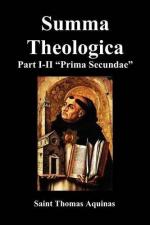Obj. 2: Further, concupiscence of the flesh is aroused chiefly by what is seen by the eyes, according to Dan. 13:56: “Beauty hath deceived thee.” Therefore concupiscence of the eyes should not be condivided with concupiscence of the flesh.
Obj. 3: Further, concupiscence is desire for pleasure, as stated above (Q. 30, A. 2). Now objects of pleasure are perceived not only by the sight, but also by the other senses. Therefore “concupiscence of the hearing” and of the other senses should also have been mentioned.
Obj. 4: Further, just as man is induced to sin, through inordinate desire of good things, so is he also, through inordinate avoidance of evil things, as stated above (A. 4, ad 3). But nothing is mentioned here pertaining to avoidance of evil. Therefore the causes of sin are insufficiently described.
On the contrary, It is written (1 John 2:16): “All that is in the world is concupiscence of the flesh, or [Vulg.: ‘and’] pride of life.” Now a thing is said to be “in the world” by reason of sin: wherefore it is written (1 John 5:19): “The whole world is seated in wickedness.” Therefore these three are causes of sin.
I answer that, As stated above (A. 4), inordinate self-love is the cause of every sin. Now self-love includes inordinate desire of good: for a man desires good for the one he loves. Hence it is evident that inordinate desire of good is the cause of every sin. Now good is, in two ways, the object of the sensitive appetite, wherein are the passions which are the cause of sin: first, absolutely, according as it is the object of the concupiscible part; secondly, under the aspect of difficulty, according as it is the object of the irascible part, as stated above (Q. 23, A. 1). Again, concupiscence is twofold, as stated above (Q. 30, A. 3). One is natural, and is directed to those things which sustain the nature of the body, whether as regards the preservation of the individual, such as food, drink, and the like, or as regards the preservation of the species, such as sexual matters: and the inordinate appetite of such things is called “concupiscence of the flesh.” The other is spiritual concupiscence, and is directed to those things which do not afford sustentation or pleasure in respect of the fleshly senses, but are delectable in respect of the apprehension or imagination, or some similar mode of perception; such are money, apparel, and the like; and this spiritual concupiscence is called “concupiscence of the eyes,” whether this be taken as referring to the sight itself, of which the eyes are the organ, so as to denote curiosity according to Augustine’s exposition (Confess. x); or to the concupiscence of things which are proposed outwardly to the eyes, so as to denote covetousness, according to the explanation of others.
The inordinate appetite of the arduous good pertains to the “pride of life”; for pride is the inordinate appetite of excellence, as we shall state further on (Q. 84, A. 2; II-II, Q. 162, A. 1).




